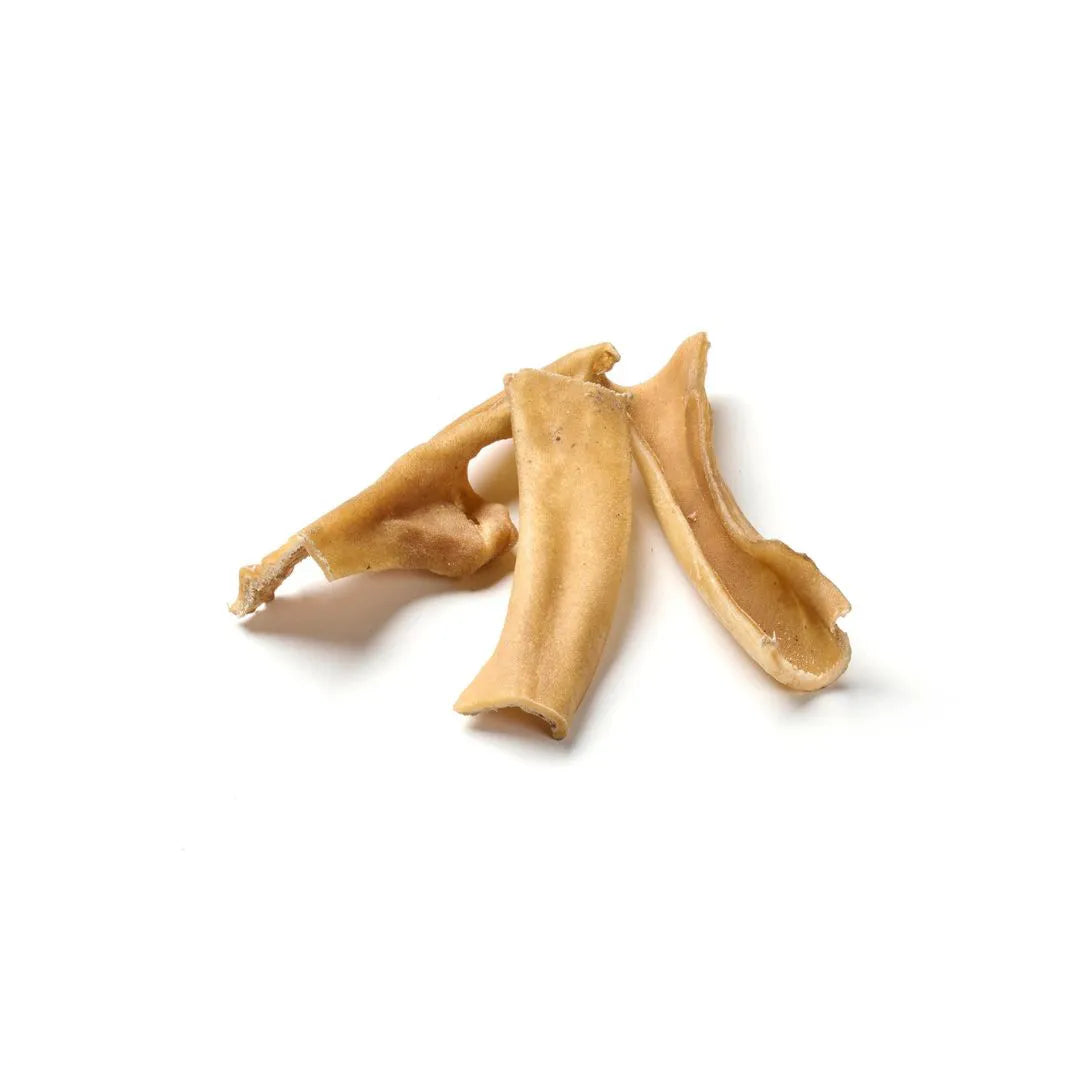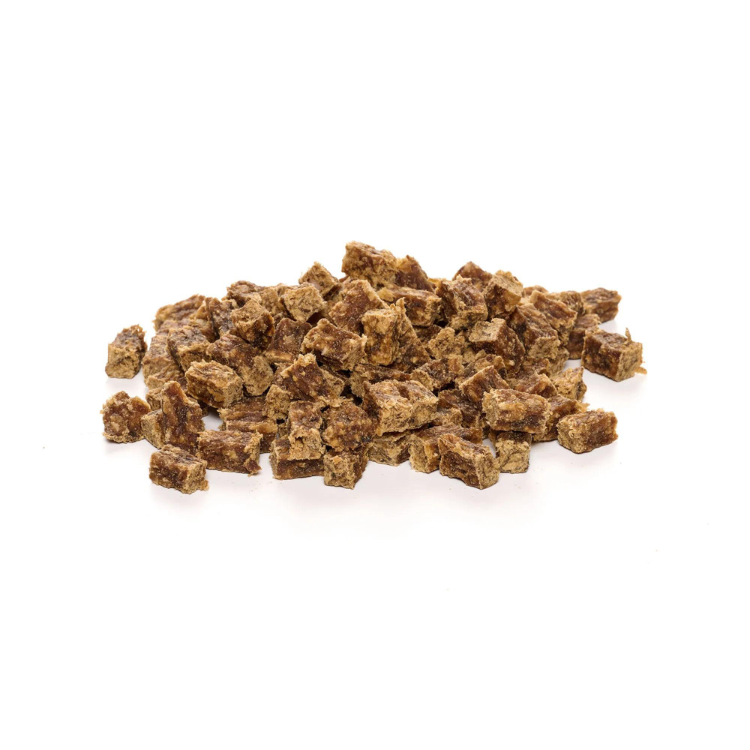
Flying with a dog
Share
While for many people, flying is associated with a pinch of excitement and perhaps even a touch of fear of flying, the question arises: What must it be like for dogs? Our loyal companions, who are normally used to being at our side and in familiar surroundings, often have to travel alone in the cargo compartment as "luggage" when flying.
Going on holiday with a dog can be a challenge in itself, but flying with a dog requires special planning and preparation. Without it, it will be a journey into the unknown. But with the right approach, this challenge can be mastered. In this article, you will learn how to best prepare your dog for a flight and what measures you can take to make this unfamiliar situation as pleasant as possible for him. Let's explore together how you and your dog can take off stress-free.
Content: Flying with a dog
- Preparing and planning your flight
- Decision: Is flying right for your dog?
- Health check and necessary documents
- Choosing the right airline
- Airline transport conditions and policies
- Registration and additional costs
- Preparing the transport box
- Checklist for flying with a dog
- Getting used to the transport box
- The day of departure
- Final preparations at home
- Activities at the airport
- Boarding and rules of conduct during the flight
- Tranquilizers: Yes or No?
- Arrival and settling in at the destination
- Conclusion
Discover our selection of premium dog chews!
Preparing and planning your flight
Proper preparation and planning for traveling with a dog are crucial to ensure that your dog has the least stressful flight possible. From the basic decision of whether flying is possible for your dog - or whether a train journey with your dog might not even make more sense - to choosing the right airline and the necessary health checks - here are the most important steps you should consider.
Decision: Is flying right for your dog?
Before you decide to travel by plane with your dog, you should carefully consider whether this method of transport is suitable for your four-legged friend. A flight can be particularly stressful, especially if your dog has to travel in the cargo hold. Take into account your dog's age, health and temperament. In some cases, an alternative travel option, such as a car or train, may be less stressful.
Health check and necessary documents
A visit to the vet is essential before your trip. Have your dog checked for its general health and resilience. The vet will also issue you with the necessary documents, such as the EU pet passport and vaccination certificates. Find out about the entry requirements of your destination country in good time, as some countries require special vaccinations or quarantine regulations.
Choosing the right airline
Not all airlines transport dogs and the conditions for taking them on board can vary greatly. Choose an airline that is pet-friendly and has good reviews. Find out about the exact regulations: some airlines only allow dogs in the cabin, others only in the cargo hold and there are also airlines that do not transport dogs at all. Weigh up the options of whether your dog should travel in the cabin or in the cargo hold and make sure that the airline you choose offers the right transport option for your dog.
Airline transport conditions and policies
Each airline has specific rules for transporting pets, depending on the dog's size, weight and breed. Check these policies early to make sure you meet all requirements.
Registration and additional costs
You must register your dog with the airline in good time, often at least 48 hours before departure. There are also additional costs for transporting your dog, which can vary depending on the destination and the size of the crate. Factor these costs into your travel budget. Make sure the crate is labeled with your name, address and phone number. This information should be waterproof and clearly legible so that your dog can be quickly identified in the event of problems or loss.
Preparing the transport box
A stable and comfortable transport box is essential for the safety and comfort of your dog during the flight. The box should be bite-proof, breathable and waterproof on the bottom. Your dog must be able to stand upright and turn around in it. Get your dog used to the transport box early on by making it a familiar and comfortable place.
Checklist for flying with a dog
A thorough checklist will help you ensure that you and your dog are fully prepared and that nothing important is forgotten. Here are the key points to consider:
Documents and evidence
Make sure you have all the necessary documents and evidence:
- EU pet passport with current vaccinations for the dog, especially against rabies
- Health certificate from the veterinarian
- Documents of dog insurance, if available
- Entry requirements and possible quarantine regulations of the destination country
- Flight ticket and booking confirmation for the dog
Luggage and necessary equipment
Pack everything your dog will need during the trip and at your destination:
- High-quality transport box that complies with airline guidelines
- Leash and muzzle if necessary
- Favorite blanket, dog toy or a worn piece of clothing of yours to calm down
- Food and water for the trip as well as bowls
- Poop bags for cleanliness during travel
- Medication, if your dog needs it
- Address label on the collar and contact information on the transport box
Pamper your dog with our delicious chews!
Final checks before departure
Make sure all preparations are complete before heading to the airport:
- Check that all documents are complete and up to date
- Make sure the transport box is securely closed and your dog can stand and turn comfortably in it
- Check that the box is correctly labelled with your name, address and telephone number
- Check your dog's booking and registration with the airline
- Pack an emergency bag with the most important items for your dog in case the luggage arrives late
- Allow enough time to get to the airport and check in without stress
With this checklist you will be well prepared and can ensure that the flight is as pleasant as possible for your dog.
Getting used to the transport box
Getting used to the transport box is a crucial step to minimise stress for your dog during the flight. By gradually getting used to it and creating a pleasant environment in the box, you can help your four-legged friend to feel safe and comfortable.
Gradual familiarization at home
Start getting your dog used to the carrier early. Here are some steps you can follow:
- Introduction: Place the crate in a familiar room and let your dog explore it at his own pace. Reward him with chews and praise when he enters the crate.
- Short-term stays: Encourage your dog to spend short periods of time in the crate. Start with a few minutes and gradually increase the duration. At first, stay nearby and observe his reaction.
- Close the door: Once your dog feels comfortable, start closing the door for a short time. Gradually increase the time the door remains closed. Make sure your dog stays calm and does not feel stressed.
- Staying alone: Practice staying alone in the crate with your dog. Start by leaving the room for a few minutes and gradually increase the duration. This will help him get used to being away and develop trust in the crate.
Tips for a pleasant environment in the box
To make the transport box a comfortable place for your dog, consider the following tips:
- Familiar smells: Put a blanket or a worn T-shirt of yours in the crate. Familiar smells can give your dog a sense of security.
- Favorite toy: A familiar toy or stuffed animal can help calm your dog and give him a sense of familiarity.
- Rewards: Give your dog snacks when he is in the crate. This reinforces positive associations with being in the crate.
- Comfort: Make sure the bottom of the crate is covered with an absorbent, non-slip blanket. This will increase comfort and prevent your dog from slipping.
- Ventilation: Make sure the crate is adequately ventilated so your dog gets enough fresh air.
Reward your best friend with our dog treats!
By taking these measures, you can make the transport box a safe and pleasant place for your dog to retreat to. A positive attitude towards the box will help your four-legged friend to experience the flight more relaxed.
The day of departure
On the day of departure, it is important that both you and your dog are well prepared. By taking the right steps, you can ensure that stress is kept to a minimum and everything goes smoothly.
Final preparations at home
Before you head to the airport, there are a few final steps you should take at home:
- Feeding: Feed your dog about four to six hours before departure to ensure that he travels with a full stomach but still has enough time to avoid digestive problems. Take into account the length of the flight and departure time; for very early or long flights, it may be a good idea to adjust the feeding time accordingly.
- Walk: Take your dog for a long walk so he can get plenty of exercise and burn off some energy. A relaxed and tired dog will cope better with the journey.
- Go for a walk: Take your dog for a walk shortly before departure so that he can relieve himself and does not have to urgently go while he is in the transport box.
- Check the equipment: Make sure that all necessary items, such as leash, muzzle, documents and food, are within reach and nothing has been forgotten.
Activities at the airport
Once you arrive at the airport, there are a few things you can do to keep your dog calm and occupied:
- Check-in: Be at the airport early to ensure you have enough time to check in and drop off the transport box. This reduces stress for you and your dog.
- Mental Activity: Keep your dog mentally engaged by doing simple obedience exercises or giving him a familiar toy. This will distract him and help shorten the waiting time.
- Resting places: If possible, look for quiet places in the airport where your dog can relax while you wait to board. Avoid noisy and crowded areas to keep stress levels low.
Boarding and rules of conduct during the flight
There are some important rules and tips to follow when boarding and during the flight:
- Transport box: Make sure that the transport box is securely closed and that all necessary information is clearly marked on it. Your dog should feel comfortable in it and have enough space to move around.
- Stay calm: Stay calm and relaxed as your dog can sense your emotions. A calm demeanor can help calm your dog.
- Cabin or cargo hold: If your dog is travelling in the cabin, place the carrier under the seat in front of you and avoid opening the carrier unnecessarily. If your dog is travelling in the cargo hold, inform the cabin crew and ask them to notify you if there are any problems.
With these preparations and measures, you can ensure that the day of departure goes as smoothly and stress-free as possible for you and your dog.
Tranquilizers: Yes or No?
The question of whether you should give your dog sedatives for air travel is complex and requires careful consideration. There are different opinions and approaches that can help you make the best decision for your four-legged friend.
Expert opinions and recommendations
Most veterinarians advise against giving dogs sedatives before a flight. Sedatives can have unwanted side effects that can increase the stress of flying or even be dangerous. Among the possible side effects, circulatory problems and breathing difficulties are particularly worrying. Since your dog is traveling unsupervised in the cargo hold, no one would be able to intervene immediately in the event of complications. Another problem is that tranquilizers can interfere with your dog's natural ability to adapt to stress. Instead of getting used to the unfamiliar situation, your dog is artificially tranquilized, which can lead to panic once the drug wears off.
Alternative calming methods
If you still feel the need to give your dog something to calm him down, you should first consider mild, natural alternatives. However, keep in mind that herbal remedies can also have possible side effects and should only be given after consulting your veterinarian:
- Herbal preparations: Remedies based on valerian, passionflower or lemon balm can help calm your dog gently without the strong side effects of chemical sedatives. Be sure to consult your veterinarian before using such preparations.
- Pheromone products: Products such as DAP (Dog Appeasing Pheromone) can have a calming effect on dogs by releasing synthetic pheromones that are reminiscent of the comfort of their mother. These are available in the form of sprays, collars or diffusers.
- Acupressure and massages: Gentle acupressure or special calming massages can help reduce stress and anxiety in your dog. There are special points on the dog's body that can have a calming effect through gentle pressure.
- Training and getting used to it: In the long term, the best way to combat fear and stress is to get your dog used to the crate and simulate travel situations. Train your dog regularly to get him used to the crate and loud noises.
By using natural methods and targeted training, you can make the trip more comfortable for your dog and keep stress to a minimum. Always consult your veterinarian before giving your dog any type of sedative to ensure you are making the best decision for his health and well-being.
Arrival and settling in at the destination
After landing, pick up your dog as soon as possible from the baggage carousel or special pick-up area to reduce the time he spends in the carrier. Take him outside immediately so he can relieve himself and stretch his legs after the long journey before taking the dog to the campsite or hotel. A short walk will help him to relax. Offer your dog fresh water and a small amount of dog food to avoid overloading his stomach. If possible, make the first few hours a little quieter to avoid overwhelming him. Avoid noisy places and large crowds. Familiar objects such as his favorite blanket or toy can help him feel safer. Give your dog time to explore the new environment at his own pace and maintain a regular daily routine, similar to that at home. Pay attention to his behavior and possible signs of stress, and give him extra rest and attention when necessary. This will help your dog to quickly get used to the new environment and experience the trip positively.
Conclusion
Even if flying with a dog is a challenge, there are many things you can do to make the flight more pleasant for your dog. Thorough preparation and planning make the difference and help to reduce stress for your four-legged friend and make the trip as relaxing as possible. By choosing a suitable airline, carrying out regular health checks and getting your dog used to the carrier early on, you create the best conditions for a stress-free journey. Although sedatives - whether natural or not - can be an option, they should only be used in exceptional cases and always in consultation with the vet. Remember that it's not just the length of the trip that's important, but also the quality of the time you spend together. With the right preparation and care, you can ensure that the flight is not only safe for your dog, but also as comfortable as possible.
Reward your best friend with our dog treats!















